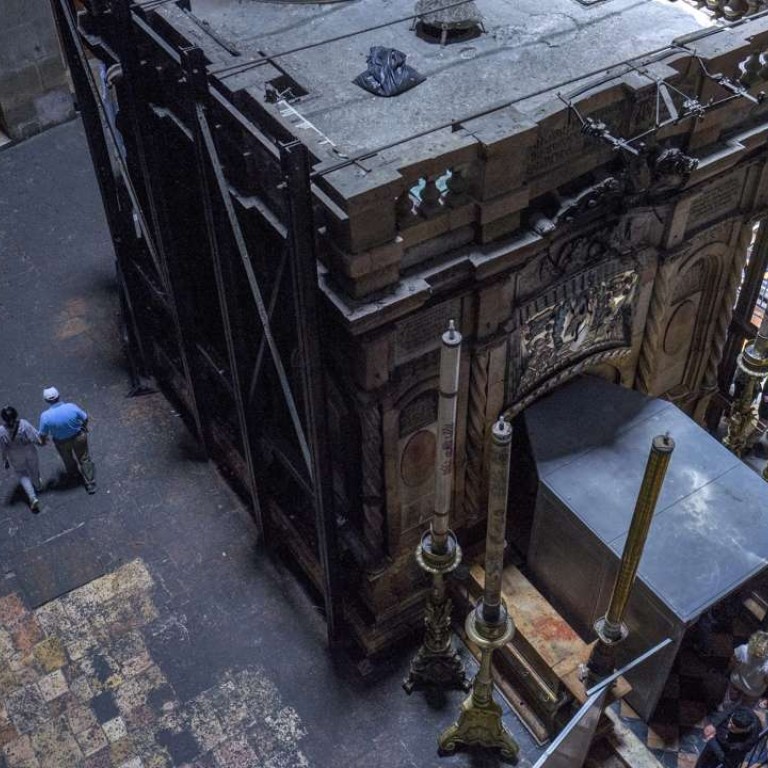
Christian groups unite to renovate Jesus Christ’s tomb, setting aside their religious rivalries
A team of experts has begun a historic renovation at the spot where Christians believe Jesus was buried, overcoming longstanding religious rivalries to carry out the first repairs at the site in over 200 years.

An ornate structure with hanging oil lamps, columns and oversize candlesticks, the Edicule was erected above the spot where Christian tradition says Jesus’ body was anointed, wrapped in cloth and buried before his resurrection. It stands a few hundred meters from the supposed site of Jesus’ crucifixion.
The church, characterised by stone staircases, dark chambers and golden decorations, is one of Christianity’s holiest shrines. But that hasn’t stopped clerics from engaging in turf rivalries over the years.
Roman Catholics, Greek Orthodox and Armenians are responsible for maintaining separate sections of the church, and each denomination jealously guards its domain. While the clergymen who work and pray at the church generally get along, tensions can rise to the surface. In 2008, an argument between Greek Orthodox and Armenian monks erupted into a brawl.

The three churches share possession of the shrine, holding prayer services at different times of the day and night, so restoring the Edicule was in everyone’s interest.
“We equally decided the required renovation was necessary to be done, so we agreed upon it”, said the Reverend Samuel Aghoyan, the top Armenian church official at the church.
Antonia Moropoulou, the scientific coordinator of the project, said the tomb is stable, but is warped and needs urgent attention after years of exposure to environmental factors like water, humidity and candle smoke.
“The marble and stone slabs have developed, due to the stresses, some deformations,” said Moropoulou, an architect at the National Technical University of Athens, which is supervising the renovation. In addition, the structure needs to be protected from the risk of earthquake damage.
She said that even an iron cage around the Edicule built by English authorities in 1947, cannot bear the stress. “So another solution is needed,” she said.
The project will bolster the structure by, among other things, replacing the mortars and strengthening the columns. It is expected to take eight to 12 months, experts and church clerics said. During that time, pilgrims will be able to continue visiting the site, they said.
The project will cost about $3.3 million (3 million euros), said Theophilos III, the Greek-Orthodox patriarch of Jerusalem. Each church is contributing funds. In addition, Jordan’s King Abdullah made a personal donation in April for the project. Jordan controlled Jerusalem’s Old City until the 1967 Mideast war, and the kingdom continues to play a role safeguarding Muslim and Christian holy sites.
In a show of unity, on May 20 clerics from the three denominations posed and shook hands in front of the scaffolding erected around the tomb ahead of the work.
“What has happened is a very good sign, a sign of togetherness,” said Theophilos III.
The church, one of the world’s oldest, was built in 325 AD by the Roman Emperor Constantine. That structure was destroyed in 1009 by Muslim Caliph al-Hakim. A 12th-century restoration by the Crusaders gave the Holy Sepulchre its current appearance, while in 1808 a fire all but destroyed the Edicule.

